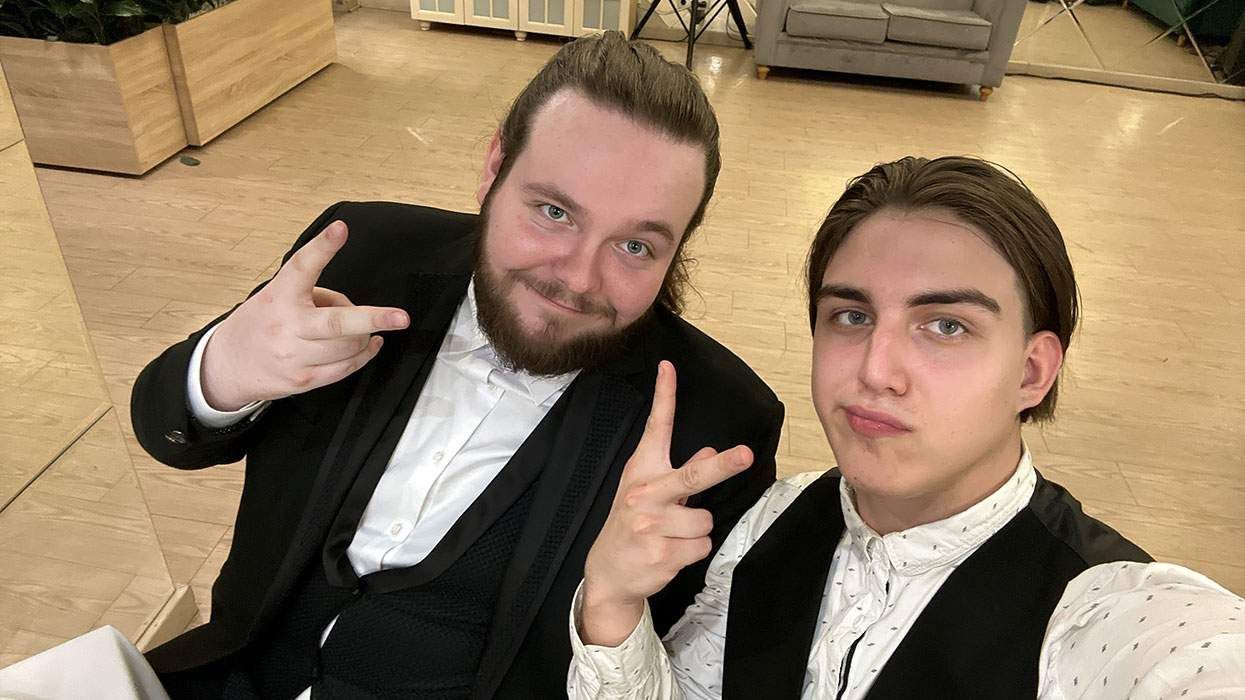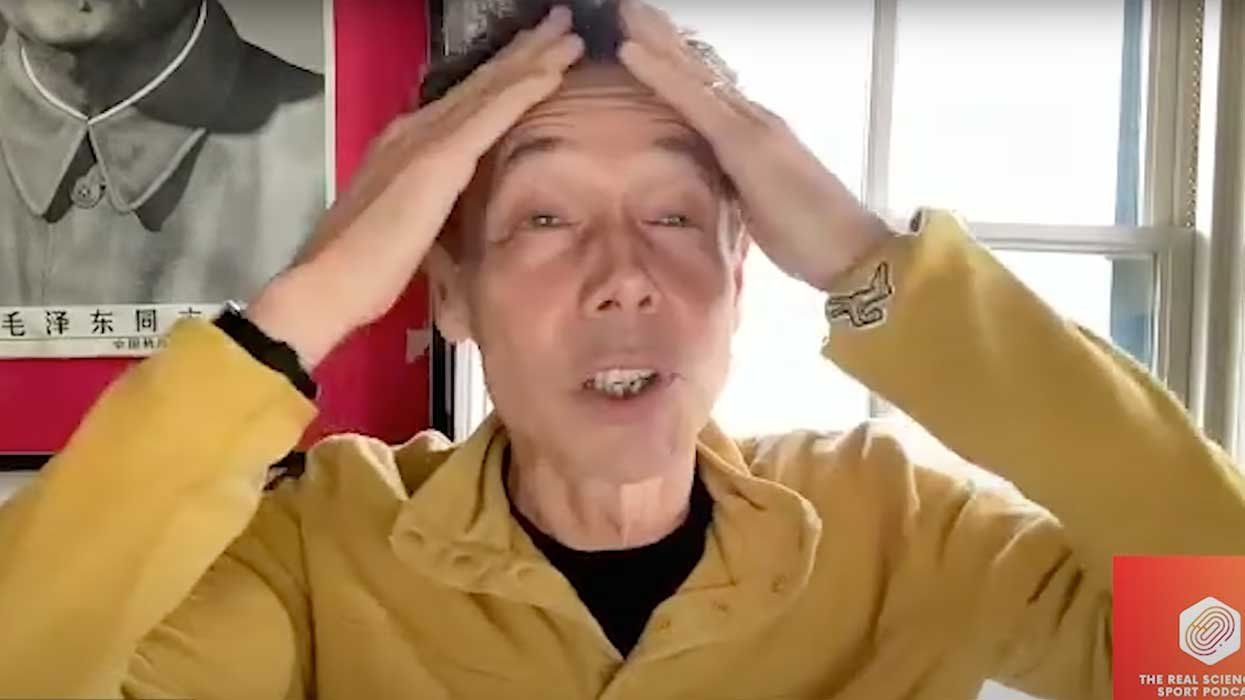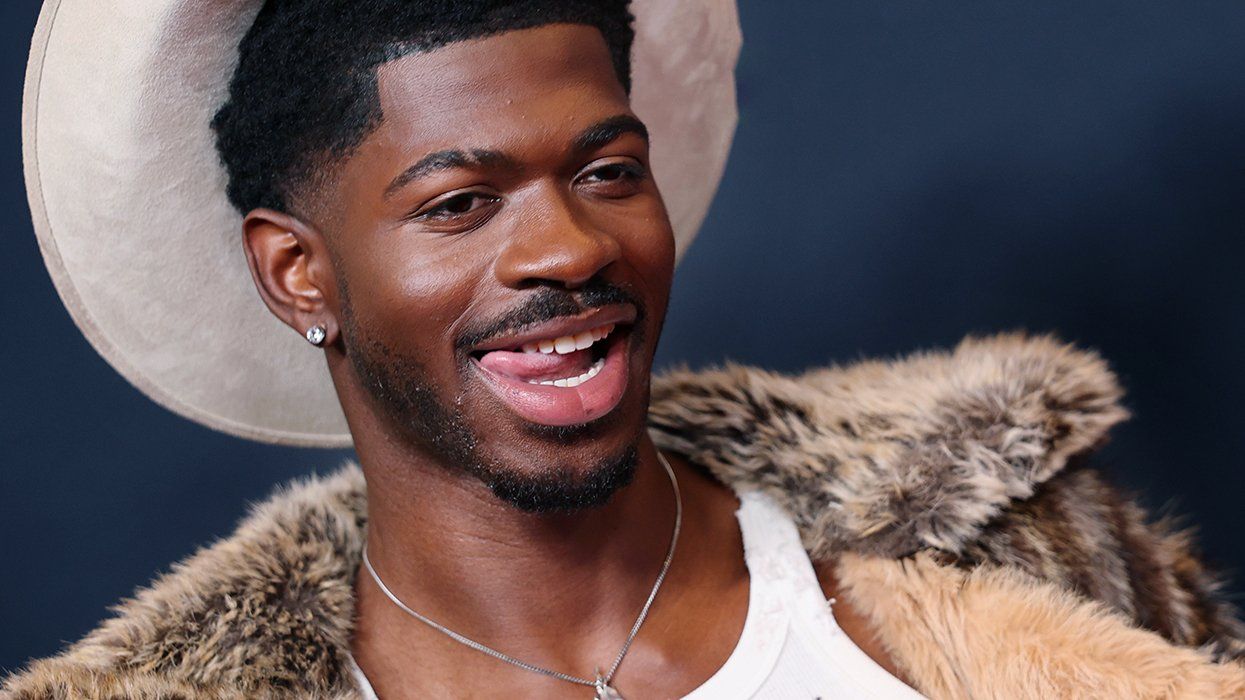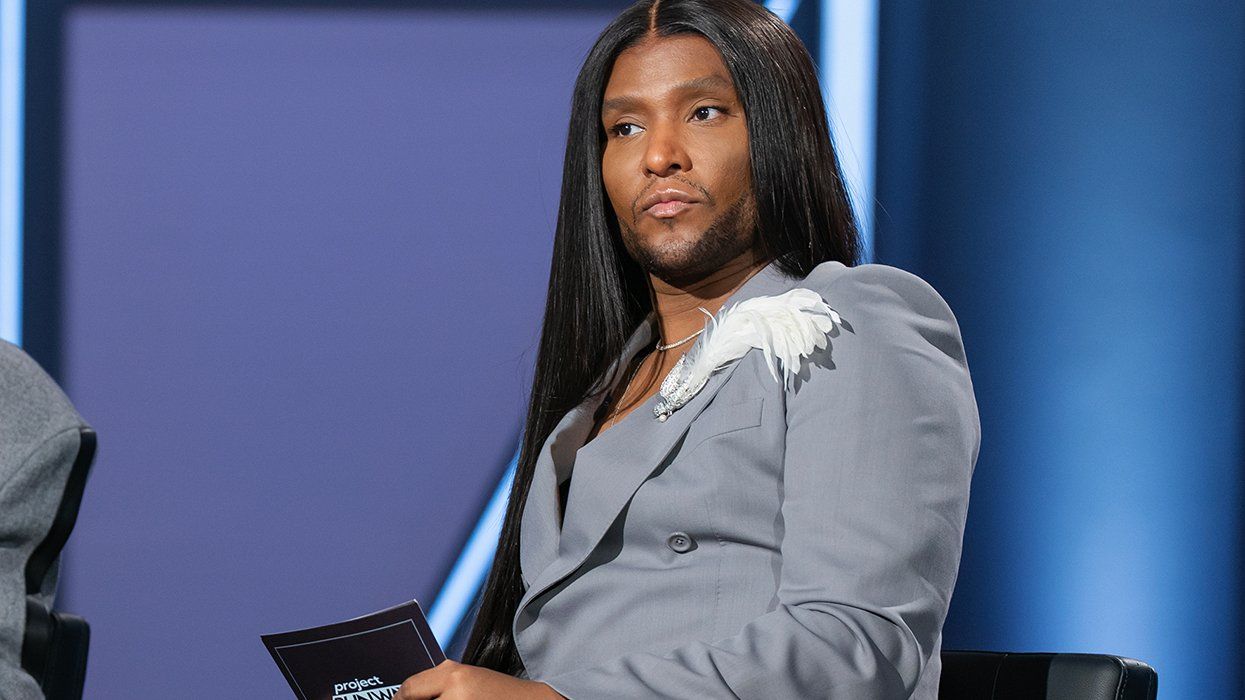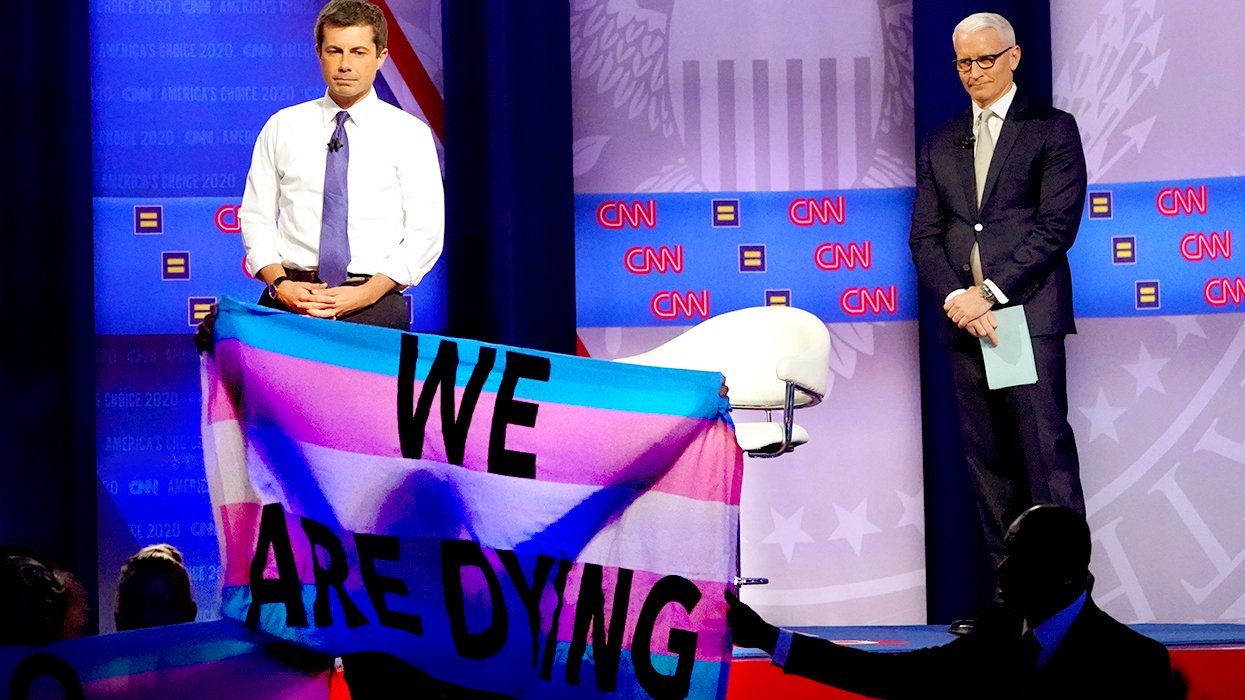“Let’s Clean House!” was a catchy enough slogan, if not overshadowed by the more popular, “I like Ike!”
While “Let’s Clean House” was integral to Dwight D. Eisenhower’s 1953 campaign, the slogan has a sinister significance unbeknownst to most Americans.
Eisenhower was elected under a growing fear that democratic leadership had led the government to become indulgent to communism, corruption, and sexual perversion.
Americans are familiar with the Red Scare of the 1950s and the hysteria that followed. The perceived threat was that communists had “infiltrated” the United States government. Fewer are aware of the simultaneous and intertwined Lavender Scare, in which the federal government attempted to purge itself of homosexuality.
Fears that Soviet spies had permeated the government gave the Eisenhower administration an excuse to promote widespread homophobia. A panic ensued over the erroneous possibility that gay and lesbian officials could more easily be blackmailed into betraying government secrets. At least, that was the public rationalization behind the purge. In reality, Eisenhower sought any excuse for a bureaucratic cleansing of what he called “perverts.” And while a single past association with a communist organization was seen as unreasonable grounds for firing an employee, one homosexual act was considered enough reason to boot someone from a government job.
A witch hunt ensued. Thousands of government workers were brutally interrogated by the FBI or other government officials, then forced to step down or fired. The workers were threatened to be outed to their families and friends if they did not both cooperate and provide names of other LGBTQ+ individuals. This led to unemployment, mass suicide, and other consequences lost to history.
But what does the Lavender Scare of the 1950s have to do with record-breaking superstar Taylor Swift?
There is no doubt that speculation is inherent in Swift’s platform. It seems that whenever her fans expect her to do one thing, she does the opposite. At the MTV music awards in August 2022, Taylor’s fanbase expected her to announce another “Taylor’s Version” rewrite. Instead, she announced a whole new album titled, Midnights.
Partly due to the steady rise of Swift’s TikTok fanbase, a prevalent theory surrounding the artist’s sexuality has gained traction. The name? “Gaylor” theory.
Traditional “Gaylor” lore speculates on Taylor Swift’s alleged relationship with supermodel Karlie Kloss, currently wed to Joshua Kushner. The most established topics of conversation are those surrounding “Kissgate,” a phenomenon referring to a loosely intimate photograph of the pair captured at a concert. There has also been discourse surrounding Taylor’s release of the songs “ME!” featuring Brandon Urie of “Panic! At the Disco,” and “You Need to Calm Down.”
Gaylors were thrilled at first, then infuriated upon hearing that the first title included a color that holds deep significance for the queer community. When Swift began releasing the track titles for “Midnights” in a series of TikTok videos, the star clarified that “Lavender Haze” would center on the resilience of love over gossip and rumor, citing her relationship with Joe Alwyn as an example. Swift claimed that after happening upon the term in an episode of the show Mad Men, she did her own research. “It turns out that it was a common phrase that was used in the ’50s where they would just describe being in love,” Swift said. Of course, in the present, it is impossible to research “Lavender Haze,” because all you’ll find are articles about Taylor Swift. There’s no plausible way to verify where this phrase was derived.
So, was “Lavender Haze” a real expression? And when Taylor Swift “looked it up,” what exactly did she find about the word lavender and its connection to the ‘50s? Undoubtedly, she would’ve come across the Lavender Scare in her process. With a quick keyword search of “lavender 1950s,” the first results that appear are about the Scare. And it’s hard to believe the master songwriter, who pens with great historical intricacy, would’ve missed this point, especially with rumors already circulating around her sexuality.
That all being said, whether or not Taylor Swift considers herself part of the LGBTQ+ community remains a mystery. The artist herself has not explicitly commented on her own sexuality, aside from the fact that she considers herself an ally. Some fans consider Swift’s lyricism as a form of queerbaiting, but even if her lyrics hit too close to home with the LGBTQ+ community, stars have a right to keep their identities private and come out on their own time if they so please.
And whether the first track of Midnights was a slip up on the part of the artist, was intended to be written as a form of allyship, or has a more mysterious undertone, the potential that "Lavender Haze" references a deeply historical event — the Lavender Scare — is undeniable.
The song begins, presumably with a narrative between lovers. The narrator describes herself as melancholic, but her partner doesn’t “read into” this, attaching a sense commonplace to the speaker’s melancholia. In other words, feeling somber is not a new occurrence for the speaker — or the queer community.
The listener is immediately drawn into the pre-chorus, “I’ve been under scrutiny, (yeah oh yeah). You handle it beautifully, (yeah oh yeah). All this shit is new to me, (yeah oh yeah).” These lines perfectly depict someone in love with a member of the same sex feeling scrutinized, or paranoid that any wrong move on their part will result in termination. The words describe having a target on the back of your head, while you and your lover are forced to act calm and operate like everyone else in “normal” society. And if the song is about queerness, it appears the speaker is only beginning to come into her true self, where the other party seems to be experienced with said scrutiny, and capable of handling it with grace.
The chorus, “I feel the lavender haze creeping up on me,” denotes more paranoia. Intrusive others are speculating on the speaker's sexuality, and the consequences are creeping up — there’s nothing the narrator can do to control their wandering suspicions. But there’s a subsequent frustration embedded in the lyrics, “I’m damned if I do give a damn what people think,” and a coincident urge to send caution to the wind and love who they want to love, even if it’s condemned by society. Even if they’re persecuted for it.
But up until this point, the references to the queer community are hazy. They can be cast aside as mere allusion. The third line of the chorus is what really takes a slice of the gay cake: “No deal, that 1950s shit they want from me.”
At first glance, the line could be referring to the ideal 1950s housewife, a lyric which most of Swift’s feminist fanbase would take at surface level to be a rejection of patriarchal norms.
But the artist could’ve used any historical era as a reference to feminism. She could have spoken to suffrage in the 1920s. The Lavender Scare, on the other hand, began in the exact year, 1950. This coincidence seems too direct to overlook.
Then, the speaker continues to mourn. She wishes she could just stay in the “Lavender Haze,” i.e., keep herself hidden from speculation around her sexuality; maintain her career without inquisitions into her romantic life. This was the definition of the Scare — wishing to go about one’s life without fear of being “outed.” To stay hidden in the protective “Lavender Haze.”
The next lines redirect the reader into a more typical feminist confinement — that of being seen by a man for two reasons only—as a “one-night” or a “wife.” Swift cries, “All they keep asking me is if I’m gonna be your bride.”
Here, we see the heteronormative standards of a traditional hetero relationship. Women are objectified purely for sex, or alternatively, lasting marital relations. As we know, same-sex marriage was not legalized in the United States until 2015, a far cry from the 1950s. A queer relationship is something that fits in neither category. A queer relationship would’ve been indescribable — neither a one-night, nor a wife. “I find that dizzying…” the compulsory heterosexual norms that one must keep to in order to keep their job certainly would appear dizzying to a queer person in the 1950s.
In addition to the confusion about their queerness and their relationship that doesn’t fit the norm, the speaker then fears that “they’re bringing up her history,” a potential reference to the interrogations that occurred in the Scare.
As depicted in The Lavender Scare documentary, Madeleine Tress was one of the employees interrogated by the FBI. She was told the feds had evidence she was a lesbian because she had been spotted at places that hosted “homosexual activity,” including the Red Skin Lounge. They asked her how she liked having sex with women and that she could never get it “so good” as she could from a man. One of her coworkers had identified Madeleine as a risk because she was “not feminine” and “dressed man-ish.” Her career came to a close shortly after. For Madeleine, and others, “they” literally brought up her own queer history and tried to use it against her.
For someone new to the queer community, it would be terrifying and “dizzying” to be confronted with their own queerness so abruptly. Struggles with sexuality are difficult and traumatizing enough without forceful accusations.
But with a supporting partner, who doesn’t listen to these insults, the voices can “talk and talk,” as Swift’s lyrics denote. Again, the back-and-forth struggle for unconditional love trumps all else, even a secure career.
The final “Lavender Haze” reference, specific to history, is the bridge. “Get it off your chest, Get it off my desk!” The narrator is fed up with the interrogation. She’s saying, if you must fire me, if you must say these things to me, then do so. But my sexuality is part of my life outside of work, not on the desk. Get this over with and get it out of the workplace.
She could’ve chosen any surface, but Taylor Swift wrote about a desk. She picked the one object that symbolizes the corporate workplace. And in doing so, she’s speaking directly to the LGBTQ+ Americans who were forced to clear out their desks.
And then, there’s the music video.
Taylor Swift - Lavender Haze (Official Music Video)youtu.be
At first glance, it appears that the video is, again, speaking to the tug-of-war between love and traditional gender roles of man and woman.
But make no mistake, the actor playing Swift's love interest is queer.
Laith Ashley, transgender actor and model, told Rolling Stone, “ She [Taylor Swift] knew exactly what she wanted and wanted everything to look like.”
Though the relationship in the video is certainly hetero, both partners are not cis. This relationship speaks to the varied levels of queerness that exist in a diverse world. Fans have not failed to miss the lesbian flag colors in Taylor’s '70s style crochet shirt as well as the bisexual-colored koi fish. But one concept is blatantly clear: this is a queer music video. This relationship would have been a target in the Lavender Scare.
There are many questions surrounding the artist's intentions when it comes to the LGBTQ+ community, but Swifties are accustomed to being left on the edge of their seats. And with the upcoming Speak Now (Taylor’s Version) album being released on July 7, gaylors have one question remaining: What queer curveball will the superstar send us next?
Carolyn Gevinski is an Associate Manager of Branded Content at Fortune Magazine and Master of Science (MS) student at Columbia Journalism School in New York City.
Views expressed in Out’s opinion articles are those of the writers and do not necessarily represent the views of Out or our parent company, equalpride.








